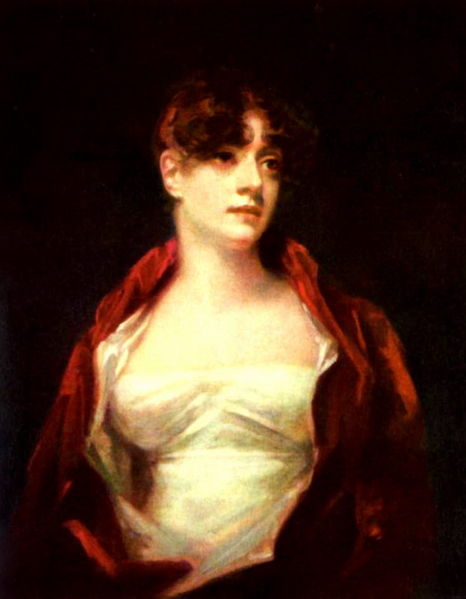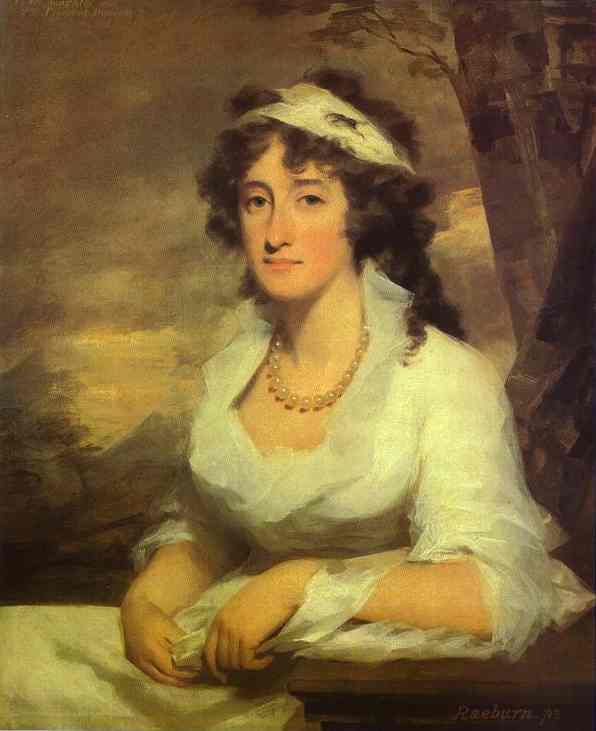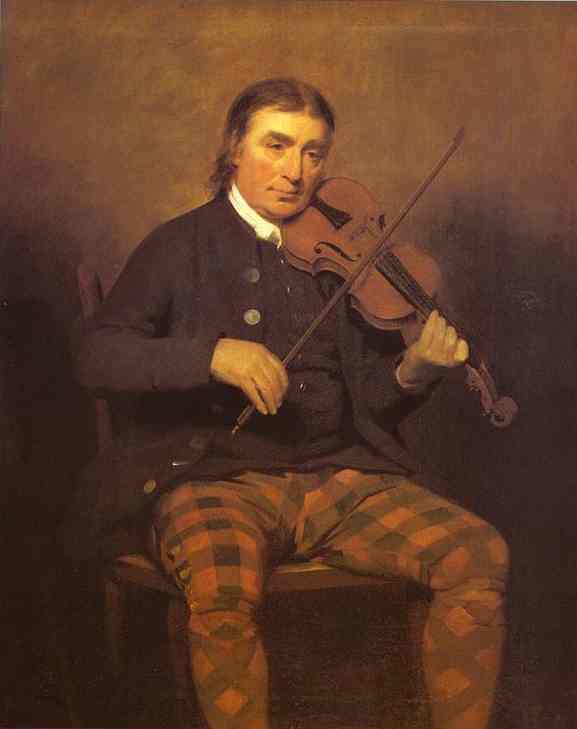Sir Henry Raeburn (1756 – 1823)
Get a Raeburn Certificate of Authenticity for your painting (COA) for your Raeburn drawing.
For all your Raeburn artworks you need a Certificate of Authenticity (COA) in order to sell, to insure or to donate for a tax deduction.
Getting a Raeburn Certificate of Authenticity (COA) is easy. Just send us photos and dimensions and tell us what you know about the origin or history of your Raeburn painting or drawing.
If you want to sell your Raeburn painting or drawing use our selling services. We offer Raeburn selling help, selling advice, private treaty sales and full brokerage.
We have been authenticating Raeburn and issuing certificates of authenticity since 2002. We are recognized Raeburn experts and Raeburn certified appraisers. We issue COAs and appraisals for all Raeburn artworks.
Our Raeburn paintings and drawings authentications are accepted and respected worldwide.
Each COA is backed by in-depth research and analysis authentication reports.
The Raeburn certificates of authenticity we issue are based on solid, reliable and fully referenced art investigations, authentication research, analytical work and forensic studies.
We are available to examine your Raeburn painting or drawing anywhere in the world.
You will generally receive your certificates of authenticity and authentication report within two weeks. Some complicated cases with difficult to research Raeburn paintings or drawings take longer.
Our clients include Raeburn collectors, investors, tax authorities, insurance adjusters, appraisers, valuers, auctioneers, Federal agencies and many law firms.
We perform Sir Henry Raeburn art authentication, appraisal, certificates of authenticity (COA), analysis, research, scientific tests, full art authentications. We will help you sell your Sir Henry Raeburn or we will sell it for you.

Sir Henry Raeburn was a Scottish portrait-painter. He was born at Stockbridge, a suburb of Edinburgh, the son of a manufacturer. Orphaned, he was placed in Heriot’s Hospital, where he received an education, and at the age of fifteen was apprenticed to a goldsmith. Here he had some opportunity to practice a kind of art; various pieces of jewelery, mourning rings and the like, adorned with minute drawings on ivory by his hand, still exist. Soon he took to the production of carefully finished portrait miniatures; meeting with success and patronage, he extended his practice to oil-painting, at which he was self-taught. The goldsmith watched the progress of his pupil with interest, and introduced him to David Martin, who bad been the favorite assistant of Allan Ramsay the Latter, and was now the leading portrait-painter in Edinburgh. Raeburn was especially aided by the loan of portraits to copy. Soon he had gained sufficient skill to make him decide to devote himself exclusively to painting.

In his early twenties, he was asked to paint the portrait of a young lady whom he had previously observed and admired when he was sketching from nature in the fields. She was the daughter of Peter Edgar of Bridgelands, and widow of Count Leslie. Fascinated by the handsome and intellectual young artist, she became his wife within a month, bringing him an ample fortune. The acquisition of wealth did not affect his enthusiasm or his industry, but spurred him on to acquire a thorough knowledge of his craft. It was usual for artists to visit Italy, and Raeburn set off with his wife. In London he was kindly received by Sir Joshua Reynolds, who advised him on what to study in Rome, especially recommending the works of Michelangelo. Raeburn carried with him to Italy many valuable introductions from the president of the Royal Academy. In Rome he met Gavin Hamilton, Pompeo Girolamo Batoni and Byers — whose advice proved particularly useful, especially the recommendation that “he should never copy an object from memory, but, from the principal figure to the minutest accessory, have it placed before him.” After two years of study in Italy he returned to Edinburgh in 1787, and began a successful career as a portrait-painter. In that year he executed a seated portrait of the second Lord President Dundas.

Examples of his earlier portraiture include a bust of Mrs Johnstone of Baldovie and a three-quarter-length of Dr James Hutton, works which, if somewhat timid and tentative in handling and not as confident as his later work, nevertheless have delicacy and character. The portraits of John Clerk, Lord Eldin, and of Principal Hill of St Andrews belong to a later period. Raeburn was fortunate in the time in which he practiced portraiture. Sir Walter Scott, Hugh Blair, Henry Mackenzie, Woodhouselee, Robertson, John Home, Robert Fergusson, and Dugald Stewart were resident in Edinburgh, and they were all painted by Raeburn. Mature works include his own portrait and that of the Rev. Sir Henry Moncrieff Wellwood, the bust of Dr Wardrop of Torbane Hill, the two full-lengths of Adam Rolland of Gask, the remarkable paintings of Lord Newton and Dr Alexander Adam in the National Gallery of Scotland, and that of William Macdonald of St Martin’s.

It was commonly believed that Raeburn was less successful in painting female portraits, but the exquisite full-length of his wife, the smaller likeness of Mrs R. Scott Moncrieff in the Scottish National Gallery, and that of Mrs Robert Bell, and others, argue against this. Raeburn spent his life in Edinburgh, rarely visiting London, and then only for brief periods, thus preserving his individuality. Although he, personally, may have lost advantages resulting from closer association with the leaders of English art, and from contact with a wider public, Scottish art gained much from his disinclination to leave his native land. He became the acknowledged chief of the school which was growing up in Scotland during the earlier years of the 19th century, and his example and influence at a critical period were of major importance. So varied were his other interests that sitters used to say of him, “You would never take him for a painter till he seizes the brush and palette.”

In 1812 he was elected president of the Society of Artists in Edinburgh, in 1814 associate, and in the following year full member of the Royal Scottish Academy. In 1822 he was knighted by George IV and appointed His Majesty’s limner for Scotland. He died at Edinburgh.

Raeburn had all the essential qualities of a popular and successful portrait-painter. He was able to produce a telling and forcible likeness; his work is distinguished by Powerful characterization, stark realism, dramatic and unusual lighting effects, and swift and broad handling of the most resolute sort. David Wilkie recorded that, while traveling in Spain and studying the works of Diego Velázquez, the brush-work reminded him constantly of the “square touch” of Raeburn.

Raeburn was unusual amongst many of his contemporaries such as Reynolds in the extent of his philosophy of painting everything directly from life. This attitude partly explains the often coarse modeling and clashing color combinations he employed which may not be to everyone’s taste, particularly those more used to the more refined style of Gainsborough and Reynolds. However these qualities and those mentioned above anticipate many of the later developments in painting of the nineteenth century from romanticism to impressionism. Sir Henry Raeburn died in St Bernard’s House, Stockbridge, Edinburgh.

Still wondering about a British painting in your family collection? Contact us…it could be by Sir Henry Raeburn.
Reviews
1,217 global ratings
5 Star
4 Star
3 Star
2 Star
1 Star
Your evaluation is very important to us. Thank you.
